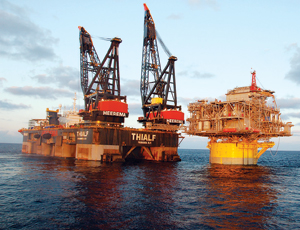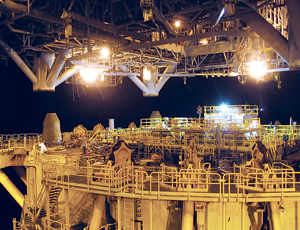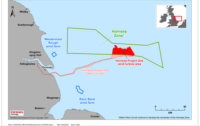In the Gulf of Mexico, in underwater terrain akin to a mountain range in waters reaching 10,000 ft deep, Netherlands-based Royal Dutch Shell plc, its partners and an extensive team of contractors are setting records for ultradeep oil and gas engineering, construction and development. At 7,817 ft, the Perdido project will be the deepest spar platform in the world as well as the deepest drilling and production facility. It also will have the deepest producing subsea well, at 9,627 ft, and will deploy the first commercial-scale subsea oil-and-gas separation plant.


Little of the technology for the multi-billion-dollar project is new, but Shell’s team is stretching conventional production and processing technology to its limits to keep costs down: San Ramon, Calif.-based Chevron U.S.A. has a 37.5% interest, Shell a 35% interest and London-based BP plc a 27.5% interest.
The group selected a spar platform— akin to a 118-ft-dia tin can, over 1,000 ft high, held upright in the water by nine 2-mile-long mooring lines—because a spar can be moved in a radius to drill wells below. The spar was designed and constructed by Paris-based Technip SA in Finland.
The more pipes, or risers, coming onto a platform, the larger and more expensive it becomes, says Dale Snyder, Shell’s Perdido project manager. With 22 risers, the weight alone would have required a 300-ft-dia spar. Shell was able to slash that by engineering a system to produce and separate oil and gas on the sea floor. The designer achieved further weight reduction by moving oil storage from the spar to five tanks placed on the sea floor.
Standard separation equipment, also sitting on the sea floor, will allow the oil and water to settle out from the gas. But unlike conventional separation, which occurs in a standard round tank, separation will occur in a 42-in.-dia by 350-ft upended pipe with concentric pipes inside to hold gas and oil once they settle. A 1,500-hp electric submersible pump in each unit will boost the low-pressure oil to the surface. The subsea tanks were put in place by Houston-based Noble Energy Inc.’s drilling rig.
Moving oil to shore presented another challenge. Perdido is 200 miles south of Freeport, Texas, and 75 miles from the nearest pipeline, which was not built to accommodate tie-ins. Shell and Houston-based Oceaneering International Inc. drew on experience from post-Hurricane Katrina pipeline repairs.
Following extensive three-dimensional computer modeling and simulation on Oceaneering’s on-shore equipment, the crew lowered a 50-ton sled around the pipeline in 4,500 ft of water to align the pipe and tools. They removed a 30-ft section of the 18-in. pipe and installed grip and seal connectors, says Mike Ellis, who managed the installation for Oceaneering. Finally, three upward connections were installed, two to reconnect the original pipeline, and a third that will be used to later connect to the Perdido line.
“Two or three years ago I don’t think that anyone would have thought this possible,” Ellis says.
The last major component of Perdido was erection of the 9,500-ton topside platform. It was designed by Houston-based Alliance Engineering Inc., built by Omaha-based Kiewit Offshore Services and installed in March by Netherlands-based Heerema Marine Contractors in what officials say was the largest-ever single lift in the Gulf of Mexico.
Additional subsea lines are being laid this summer, and first oil is expected early next year, says Shell’s Snyder. All wells are to be producing by 2013. The development is expected to produce up to 100,000 barrels per day of oil and 200,000 cu ft per day of natural gas.


Post a comment to this article
Report Abusive Comment